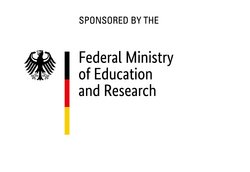KIGVI: AUTOMATED AI-BASED COMPOSITION OF VIDEO REPORTS
Overview
|
Research project |
KIGVI: Automated AI-based Composition of Video Reports |
|
Faculty |
Engineering |
|
Division |
Media Technology |
|
Project Lead |
Prof. Dr.-Ing. Matthias Narroschke |
|
Research staff |
Jori Hinderfeld Prof. Dr. Till Dannewald Prof. Dr. Matthias Kowald |
|
Administrative contact |
Dr. Michael Anton |
|
Industry partner |
Qvest GmbH |
|
Sponsor |
German Federal Ministry of Education and Research (FH-Kooperativ 2019) |
|
Duration |
01.05.2021 – 31.10.2025 |
Project Outline
The goal of the project is an innovative solution for the AI-based creation of video reports that extracts suitable segments from video sequences and composes them into a broadcast-ready report. In social networks, but also on news portals, short video reports are increasingly replacing conventional text posts to attract the attention of users. For video content providers, therefore, cost-effective and efficient production of short video reports is particularly important. Until now, video reports have been produced manually, which is time-consuming and expensive.
The project therefore aims to develop a system that can automatically perform quality assessment and composition into a broadcast-ready report. The development can be divided into two core topics. On the one hand, an AI model that extracts suitable video segments from existing video sequences and, on the other hand, another model that generates the video report from the extracted segments and archive material. For this purpose, suitable parameters describing relevant quality features are to be estimated automatically for the extracted video segemnets. In addition to purely technical features, such as image resolution and conformance to video standards, content-related and stylistic features are also to be defined and corresponding parameters estimated. These include, for example, the categorization of the sections into "background material", "recording", "interview" or "original sound sequence", or compliance with the "golden ratio" in the image. Based on the estimated parameters, the associated video segments are to be composed into a broadcast-ready reportage using the second AI model. In particular, genre-dependent pattern sequences for reports are to be taken into account, which are usually different, such as for sports news, product presentations or political reports.
